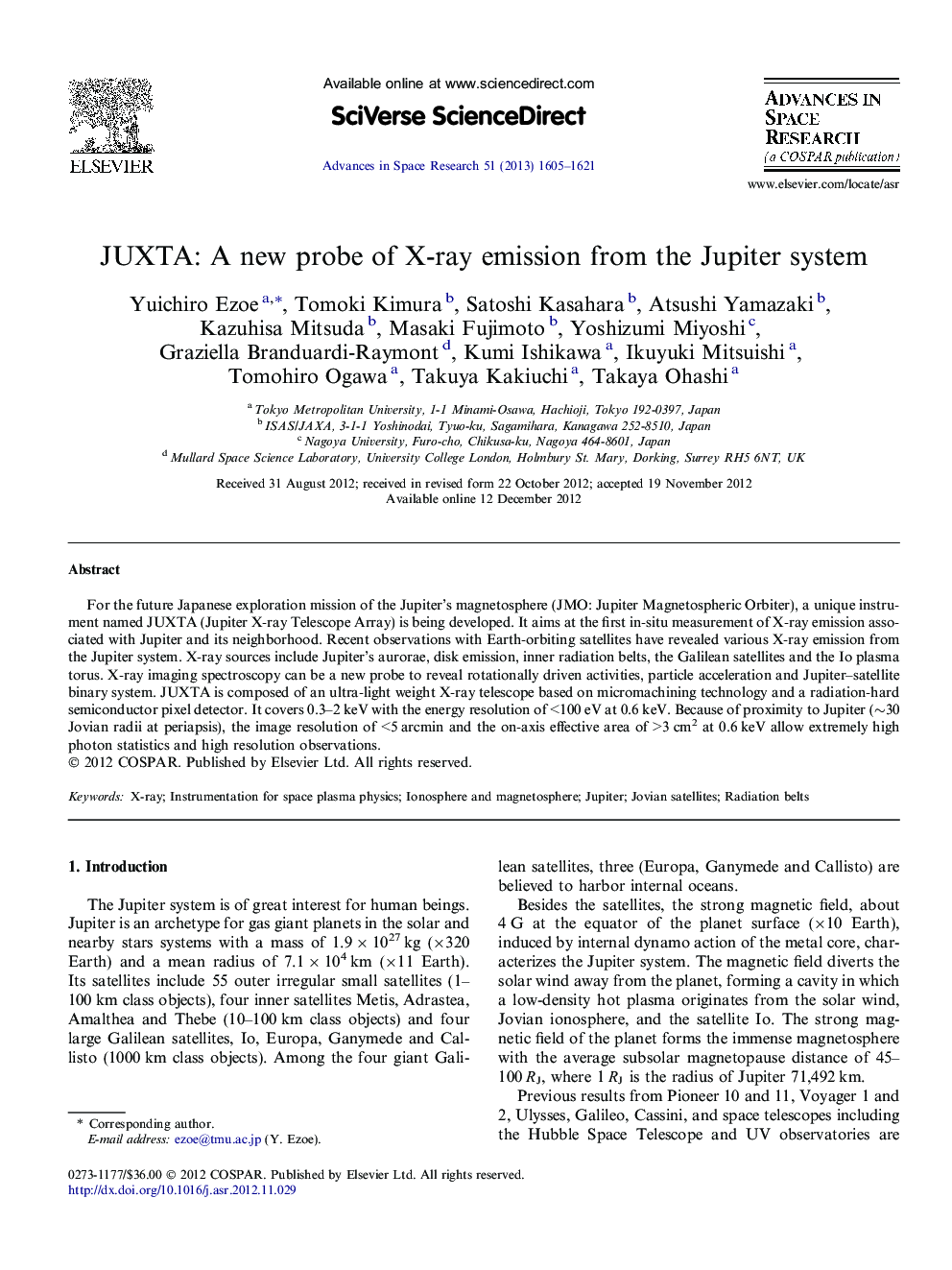| Article ID | Journal | Published Year | Pages | File Type |
|---|---|---|---|---|
| 1764927 | Advances in Space Research | 2013 | 17 Pages |
For the future Japanese exploration mission of the Jupiter’s magnetosphere (JMO: Jupiter Magnetospheric Orbiter), a unique instrument named JUXTA (Jupiter X-ray Telescope Array) is being developed. It aims at the first in-situ measurement of X-ray emission associated with Jupiter and its neighborhood. Recent observations with Earth-orbiting satellites have revealed various X-ray emission from the Jupiter system. X-ray sources include Jupiter’s aurorae, disk emission, inner radiation belts, the Galilean satellites and the Io plasma torus. X-ray imaging spectroscopy can be a new probe to reveal rotationally driven activities, particle acceleration and Jupiter–satellite binary system. JUXTA is composed of an ultra-light weight X-ray telescope based on micromachining technology and a radiation-hard semiconductor pixel detector. It covers 0.3–2 keV with the energy resolution of <100 eV at 0.6 keV. Because of proximity to Jupiter (∼30 Jovian radii at periapsis), the image resolution of <5 arcmin and the on-axis effective area of >3 cm2 at 0.6 keV allow extremely high photon statistics and high resolution observations.
► Earth-orbiting satellites have found various X-ray emission from the Jupiter system. ► X-ray imaging spectroscopy can be a new probe of the Jupiter system. ► We introduce the first in-situ X-ray imaging spectrometer for the Japanese mission.
